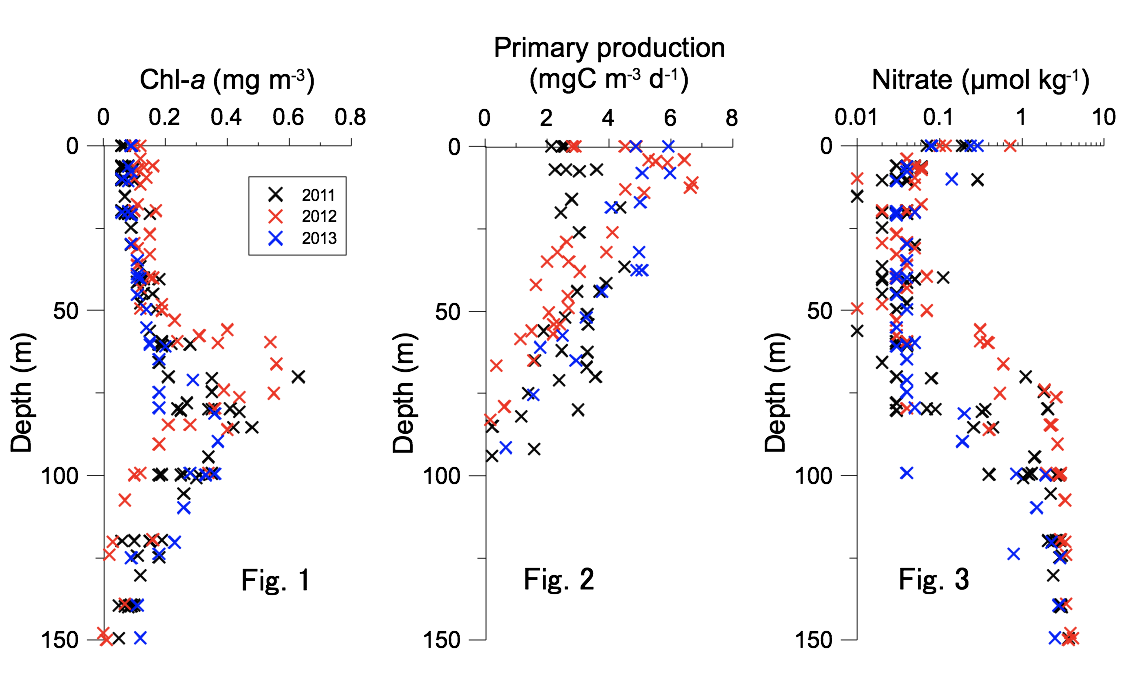OceanSITES
Station KEO is one of time-series (TS) observatories in International TS network ”OceanSITES”.
Oceanographic observation is carried out at KEO-fixed station (32oN/144oE, Fig. 1) in the subtropical northwestern Pacific Ocean (NWPO). Although nutrient is low all year-round, biological productivity in this region is comparable to that in the subarctic NWPO characterized by high nutrients. It is thus of great importance to understand the mechanism maintaining adequate nutrient supplying in the subtropical NWPO. Time-series sediment trap (Fig. 2) will be set up at the same station to collect time-series data of downward particle flux. By understanding the sources of sinking particles which can be from biological processes and terrestrial inputs (natural or anthropogenic origins), changes in biological pump due to material input from the remote continent/land will be investigated. In addition, research will also utilize meteorological (wind field, insolation), surface carbon dioxide, sea surface temperature, as well as salinity data which are collected at the same site by NOAA-Pacific Marine Environmental Laboratory (PMEL) surface mooring (Fig. 3).

Station KEO is one of time-series (TS) observatories in International TS network ”OceanSITES”.


In the subtropical northwestern Pacific Ocean, small amount of nutrients are supplied into the surface layer from the deep water via winter vertical mixing. During the stratified period, nutrients are deficient in the sunlit layer, so that phytoplankton increases around the nutricline depth (Fig. 1). Although, primary productivity is higher in the sunlit surface layer than that in the subsurface layer (Fig. 2). Ammonia recycled in the water column through decomposition of organic matter may be the main nutrient source in that layer. However, relatively high nitrate at the surface is often observed during summer (Fig. 3). Probably, such a high nitrate is supplied via aerosol transported from the remote continent/land.
Relevant with global warming, strengthened water column stratification associated with ocean surface warming tends to reduce vertical nutrient flux from subsurface layer. This implies that in the future, deposition of materials of terrestrial origin will be relatively importance to support ocean primary productivity.
